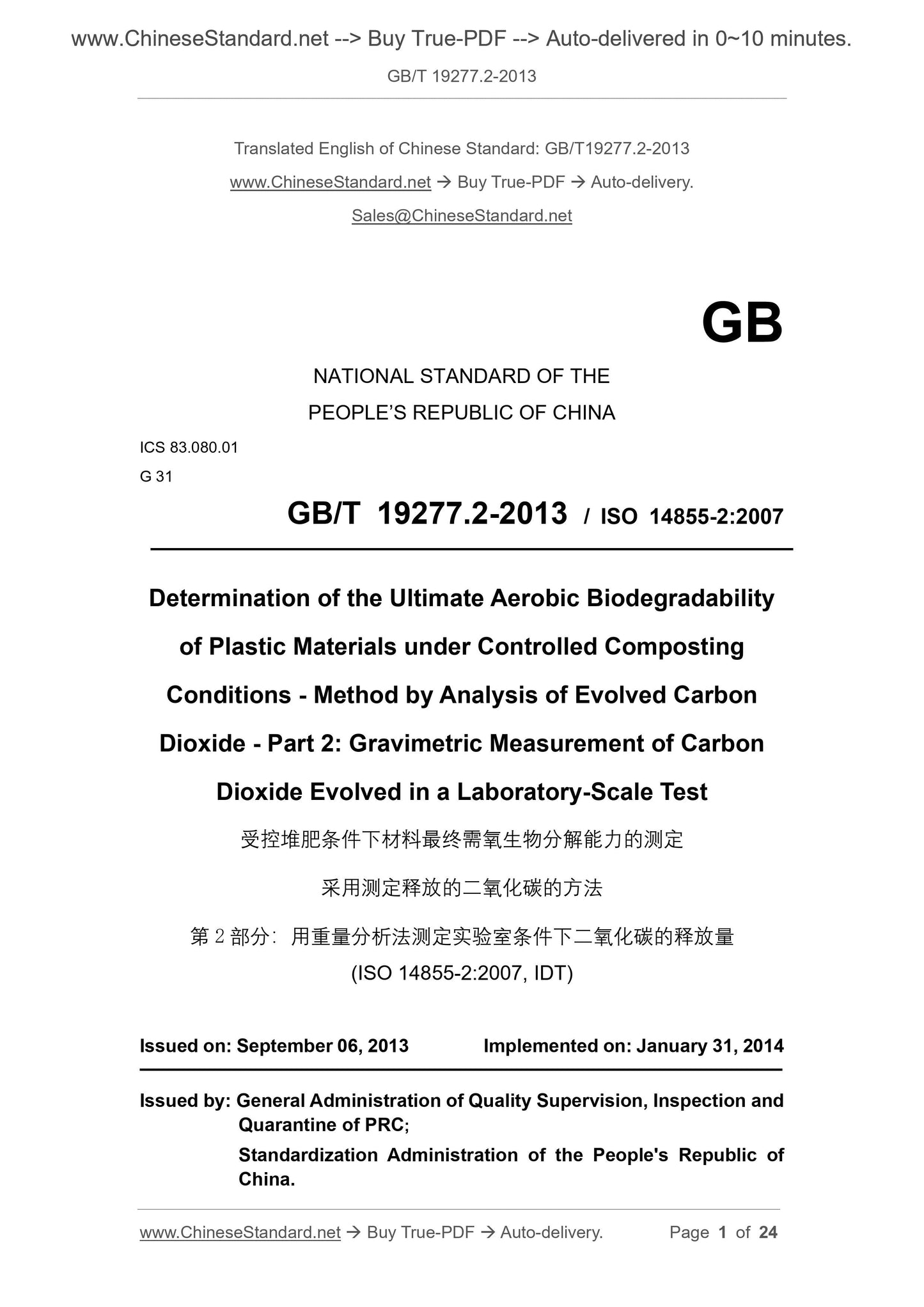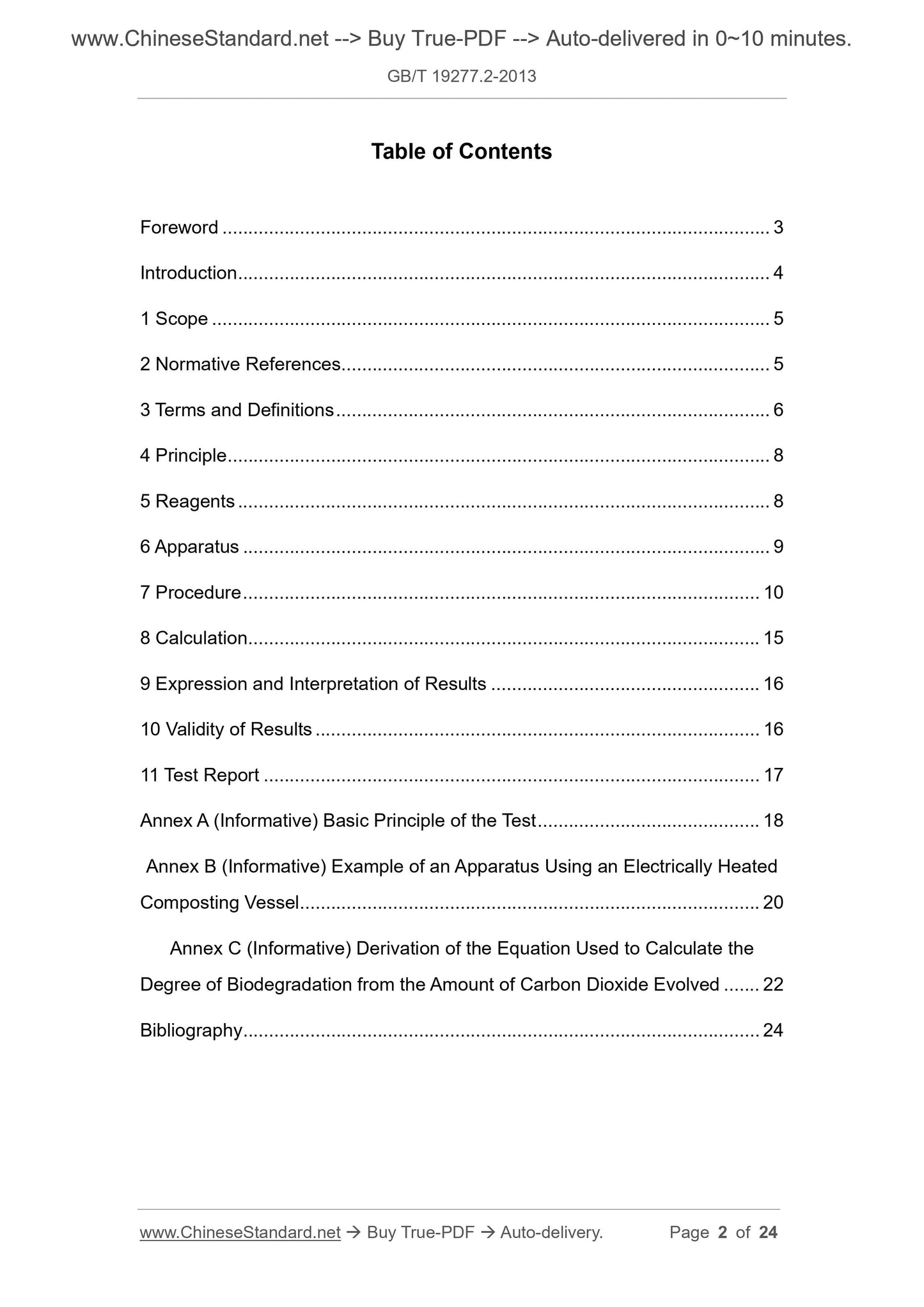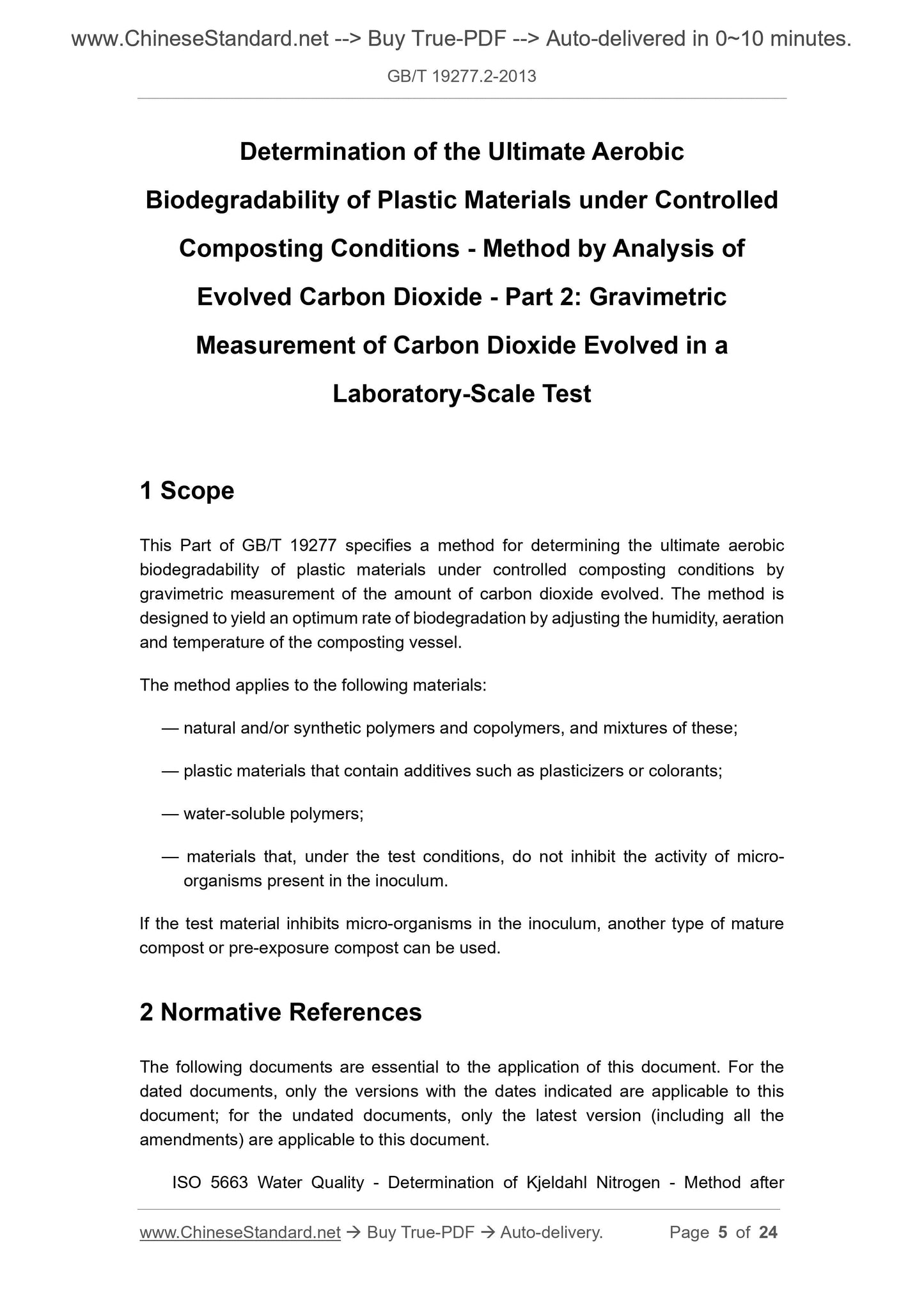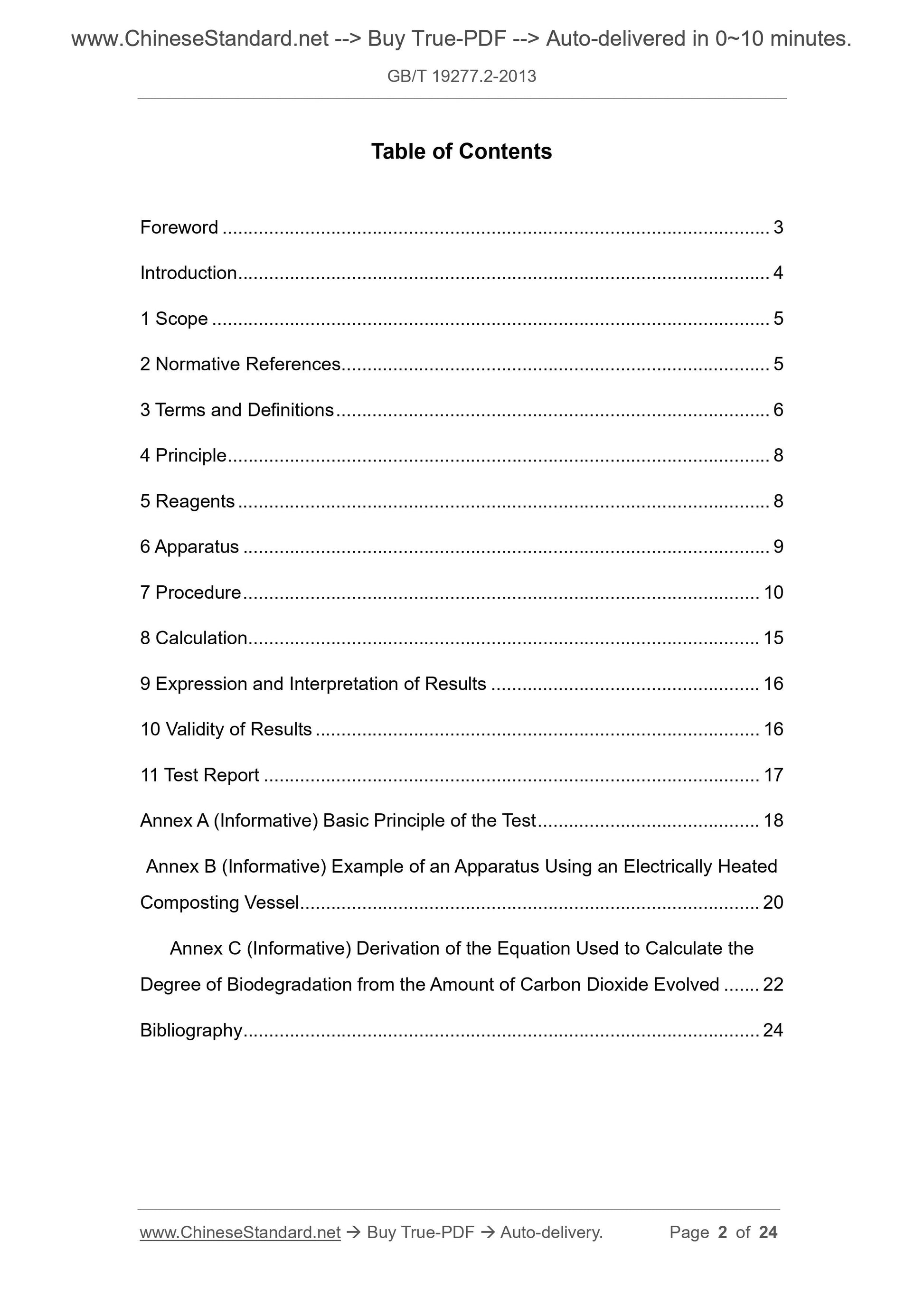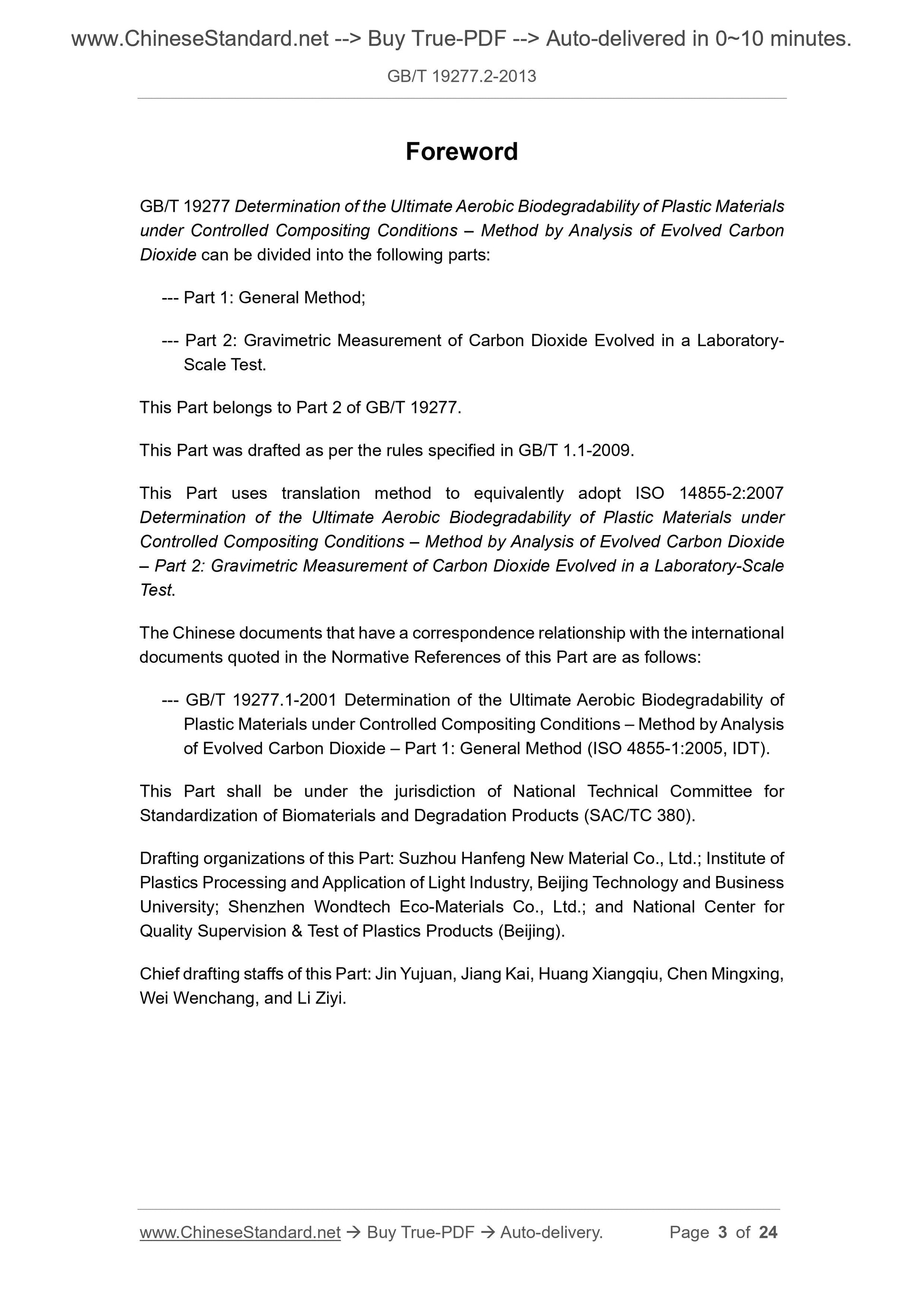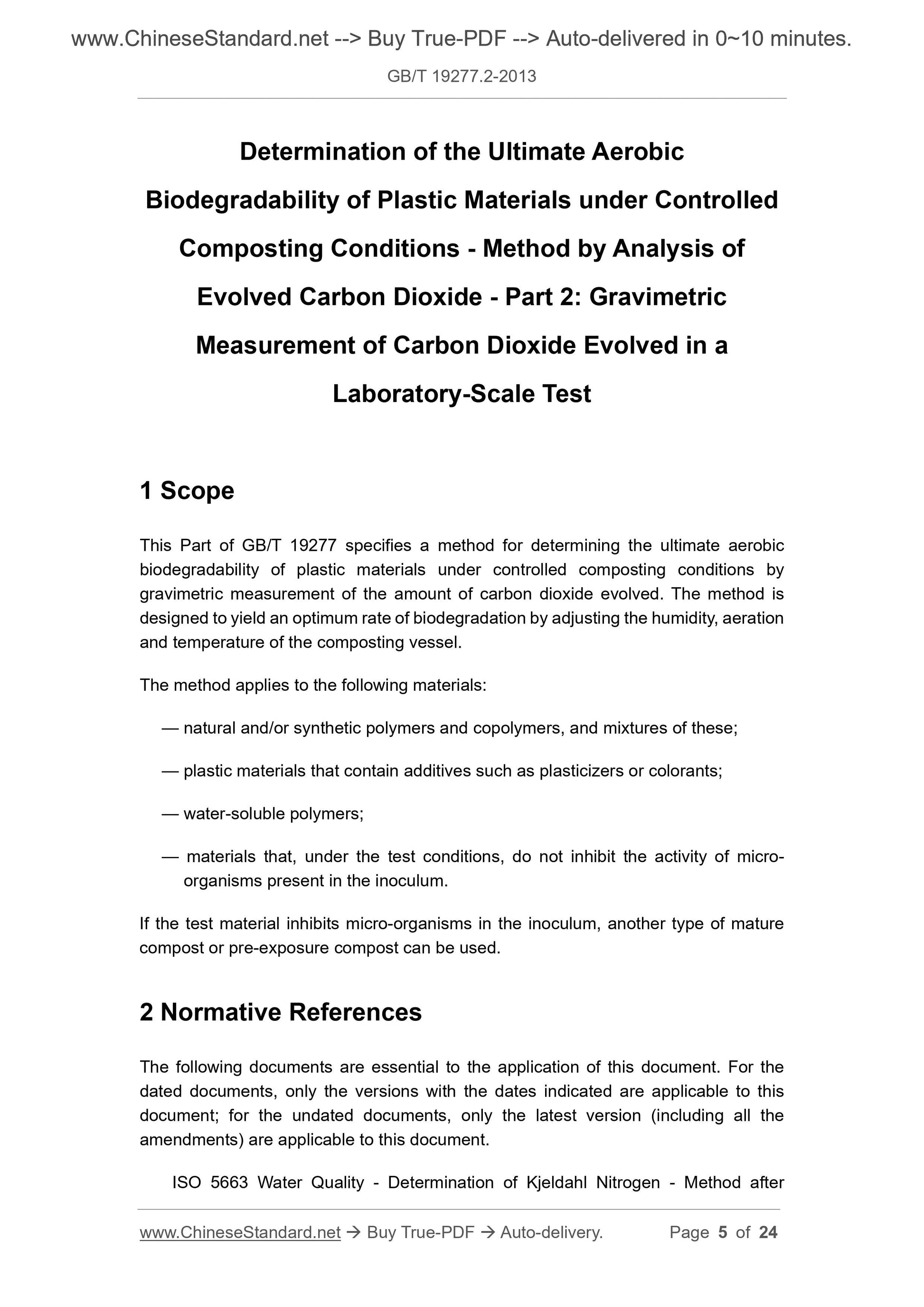1
/
of
4
www.ChineseStandard.us -- Field Test Asia Pte. Ltd.
GB/T 19277.2-2013 English PDF (GB/T19277.2-2013)
GB/T 19277.2-2013 English PDF (GB/T19277.2-2013)
Regular price
$150.00
Regular price
Sale price
$150.00
Unit price
/
per
Shipping calculated at checkout.
Couldn't load pickup availability
GB/T 19277.2-2013: Determination of the ultimate aerobic biodegradability of plastic materials under controlled composting conditions -- Method by analysis of evolved carbon dioxide -- Part 2: Gravimetric measurement of carbon dioxide evolved in a laboratory-scale test
Delivery: 9 seconds. Download (and Email) true-PDF + Invoice.Get Quotation: Click GB/T 19277.2-2013 (Self-service in 1-minute)
Newer / historical versions: GB/T 19277.2-2013
Preview True-PDF
Scope
This part of GB/T 19277 specifies a test method for determining the discharge of a material under controlled composting conditions.The amount of carbon dioxide is used to determine its ultimate aerobic biodegradability. This method regulates the humidity, aerobic concentration and temperature in the compost container
Equal conditions to achieve the best rate of biodegradation.
This section applies to the following materials.
--- natural and/or synthetic polymers, copolymers and mixtures thereof;
---Plastics containing additives such as plasticizers and pigments;
---Water soluble polymer;
--- Materials that do not inhibit microbial activity in the inoculum under the experimental conditions.
If the test material has an inhibitory effect on the microorganisms in the inoculum, other types of compost compost or pre-exposure compost can be used.
Basic Data
| Standard ID | GB/T 19277.2-2013 (GB/T19277.2-2013) |
| Description (Translated English) | Determination of the ultimate aerobic biodegradability of plastic materials under controlled composting conditions -- Method by analysis of evolved carbon dioxide -- Part 2: Gravimetric measurement of carbon dioxide evolved in a laboratory-scale test |
| Sector / Industry | National Standard (Recommended) |
| Classification of Chinese Standard | G31 |
| Classification of International Standard | 83.080.01 |
| Word Count Estimation | 16,148 |
| Quoted Standard | ISO 5663; ISO 8245; ISO 11721-1; ISO 14855-1 |
| Adopted Standard | ISO 14855-2-2007; IDT |
| Regulation (derived from) | National Standards Bulletin 2013 No. 17 |
| Issuing agency(ies) | General Administration of Quality Supervision, Inspection and Quarantine of the People's Republic of China, Standardization Administration of the People's Republic of China |
| Summary | This standard specifies: a test method, for materials under controlled composting conditions, By measuring their emissions carbon dioxide to determine its ultimate aerobic biodegradability. In this way by adjusting the composting container humidity, tempe |
Share
